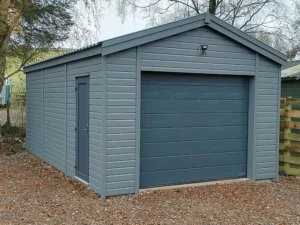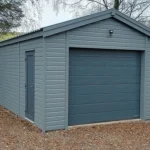Hurricanes don’t just destroy homes—they upend lives. Families in storm-prone states like Florida or Texas face flooded streets, shattered windows, and the exhausting task of rebuilding. The emotional weight is just as heavy, with stress lingering long after the winds fade.
Insurance should ease the burden, but the hurricane damage claim process often becomes another obstacle. Delays, denials, and confusing paperwork leave many policyholders feeling stranded when they need help the most. Understanding why this happens reveals the challenges homeowners face after a storm.
Understanding Complex Policy Language
Insurance policies contain legal terms that can confuse even careful readers. Words like “storm surge,” “wind-driven rain,” and “flood exclusion” can make it unclear what’s covered.
Many homeowners assume hurricane damage means full coverage, but insurers often split claims, covering wind damage while denying flooding. Without precise documentation, misunderstandings lead to rejections or underpayments.
Reading the fine print before disaster strikes helps, but few have time to decode their policy in the chaos after a storm. The confusion alone can delay claims for months.
Burden of Proof on Homeowners
After a hurricane, homeowners are responsible for proving their losses. Insurers demand photos, receipts, and contractor reports, which are difficult to gather when roads are blocked or power is out.
Worse, adjusters may blame pre-existing wear and tear for damage, forcing families to defend their claims. A missing before-and-after paper trail can mean denial.
The stress of documenting everything while managing repairs or temporary housing turns the process into a second full-time job. And without airtight evidence, even valid claims risk rejection.
Delays Due to High Claim Volume
Hurricanes affect thousands at once, flooding insurers with claims. Adjusters are stretched thin, and families wait weeks just for an inspection.
In hard-hit areas like coastal Louisiana or the Carolinas, the backlog can drag on for months. Meanwhile, unrepaired homes develop mold, rot, or further structural damage.
Delays also prolong displacement, forcing families to pay out-of-pocket for hotels or rentals while waiting for settlements. The system’s overload leaves many feeling invisible in their disaster.
Navigating the complexities of hurricane insurance claims can be daunting, especially when policyholders face unexpected challenges. Many find themselves overwhelmed by the intricate details and requirements needed to secure a fair settlement. In such situations, seeking professional assistance can be invaluable. For those needing help with storm damage insurance claims, expert guidance can streamline the process, ensuring that all necessary documentation is accurately prepared and submitted. This support can be crucial in overcoming the hurdles that often arise, from understanding policy language to negotiating with insurers, ultimately leading to a more favorable outcome for the claimant.
Disputes Over Damage Valuation
Insurers often lowball repair estimates, shocking homeowners when contractor bids are double the offer. Adjusters may dismiss hidden damage behind walls or under roofs, calling it “cosmetic.”
Some insurers push for cheap fixes instead of full replacements, even when safety’s at stake. Disputes over depreciation—how much value an old roof or floor has lost—slash payouts.
Hiring an independent assessor can help, but it’s another cost for families already stretched thin. Many give up and accept less than they’re owed.
Denials and Underpayments: A Growing Concern
More claims are denied or underpaid today, with insurers blaming “insufficient evidence” or “policy exclusions.” Some reject valid claims over minor paperwork errors. Others approve claims but pay far less than the cost of repairs, leaving families in debt. When disaster survivors fight back, the appeals process drags on, adding stress to financial strain.
It’s a system that often feels rigged against those who need it most.
Why the Process Feels Like a Second Storm
Filing a hurricane claim shouldn’t be this hard. Yet for many, the battles with insurers—over proof, delays, and lowball offers—feel like enduring another disaster. The very system meant to help becomes one more thing to survive.
Also Read-Selecting the Right Tech Stack for Mobile App Success










